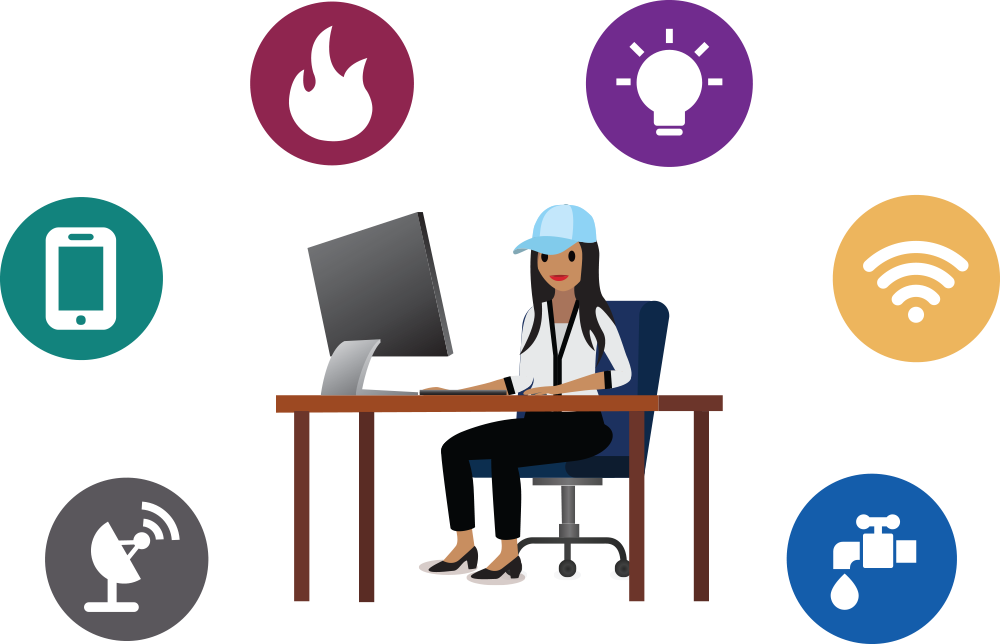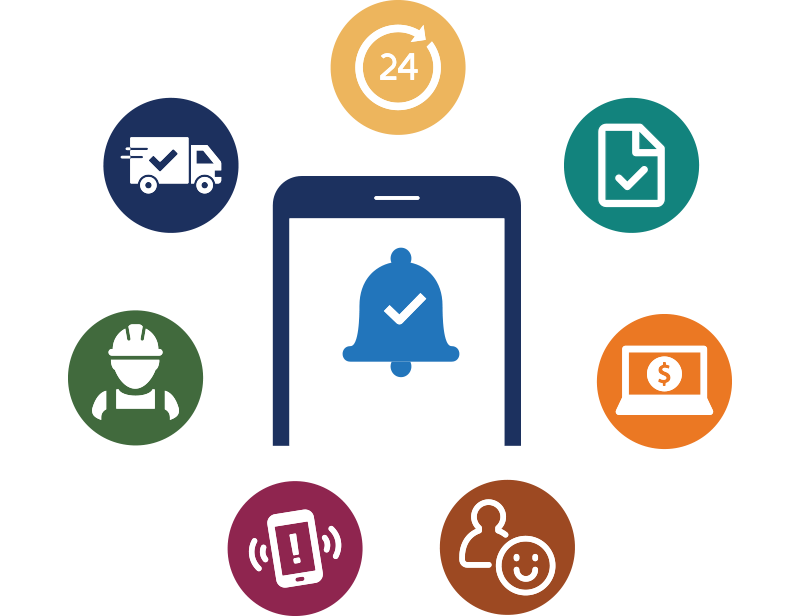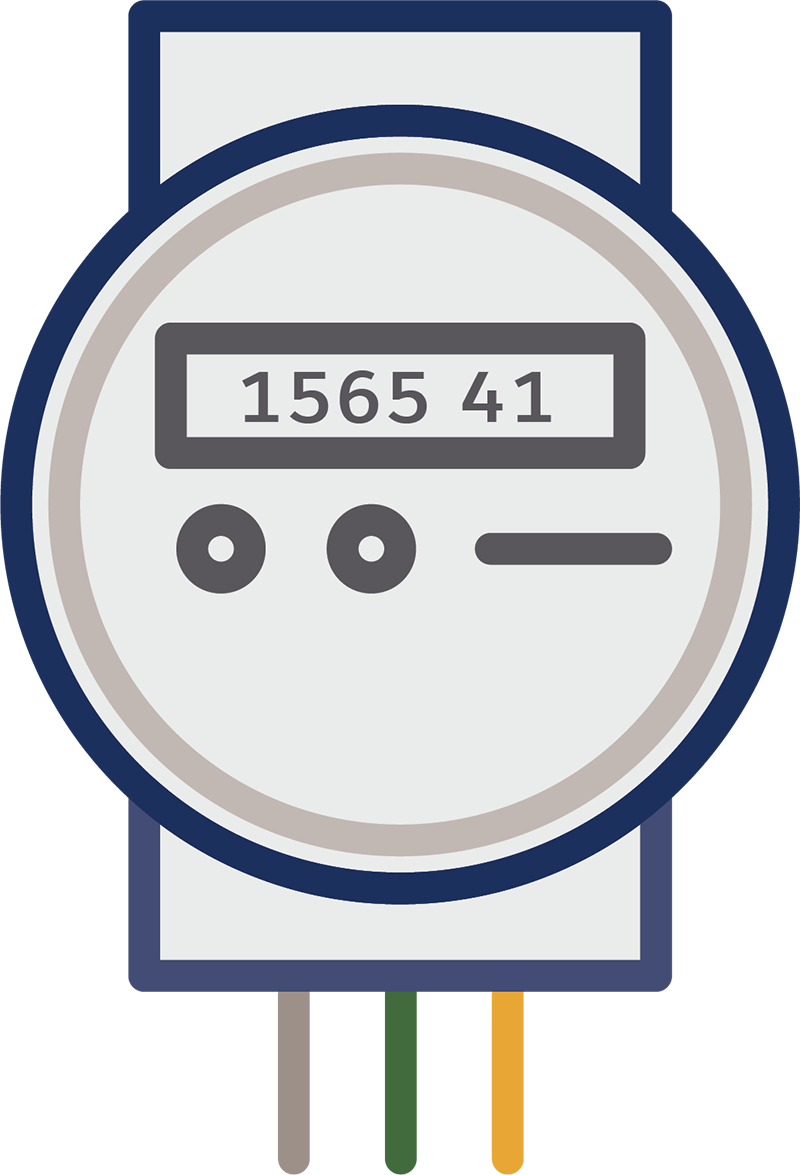Learn Common Utility Processes, Services, and Units of Measure
Learning Objectives
After completing this unit, you’ll be able to:
- Explain common utility service processes.
- Discuss common customer notifications.
- Describe the energy and utilities units of measure.
- Define the pricing and quoting terms for various energy and utility commodities.
Common Energy and Utilities Service Processes
Apart from delivering energy products to customers, utilities also provide additional services to make customers’ service experience better. Here are the most common energy and utilities service processes for business-to-business (B2B) and business-to-consumer (B2C) customers.

Manage Communication Preferences and Services
With so many channels of communication available, good customer service tailors the communication method to customer preferences. Whether it’s incoming or outgoing communications, utilities must manage their customer communications efficiently so that customers get what they need in a way that’s convenient for them.
People and businesses move and change. Customer service agents communicate regularly with individuals who are moving to a different house and need their service changed. Agents also work with businesses that plan to move to a different location.
Customers who own multiple properties need to organize their utilities efficiently. Easy access to real-time information and customer service are important to property managers.
New Programs and Energy Services
New programs and energy services are exciting topics for many customers and a chance for companies to build relationships. They share information with customers about new programs, such as solar, electric vehicles, batteries, and related offers and rebates.
Bill Inquiry and Payment Assistance
Customers sometimes call to ask questions about their bill or to submit a meter reading, but this need not be the end of the conversation. With the right tools, customer service agents can use this time to build a relationship with the customer. This includes suggesting ways for the customer to save or manage energy, which can help them save money.
Customer service agents also reach out to customers about payments and sometimes about nonpayment of bills. This can lead to conversations about payment and collections assistance.
Service Outage, Safety, and Service Callout
Service outage and safety issue notifications are two-way communications. Customers can report a service outage or safety issue, and utilities can communicate a planned or unplanned service outage or safety issue to customers through several channels.
When an equipment malfunctions, companies dispatch workers to the site to make repairs. Service can be planned or unplanned, and utilities inform customers about any potential outages and expected restoration times.
New Rates and Construction
Whether fixed or variable, rates change from time to time. New rates and rate changes can be chosen or mandated. Customer service agents regularly reach out to customers about changes and rate choices through calls and digital channels.
A lot goes on at new construction sites, and not just for the general contractor. Utilities carry out many different actions at new construction sites, which they manage on a schedule to avoid disruptions in construction.
Common Customer Notifications
Now that you know the various common customer service tasks, it’s time to learn more about the common customer notifications.

Account Activation and Deactivation Services
Customers sometimes move in and out of a utility’s service area, and they occasionally switch to a competitor as well. With current trends, it’s more common than ever for customers to contact their utilities to add, switch, and deactivate service.
Welcome Communications
When a new customer joins a utility service, it’s important to start the customer relationship with a communication to welcome them on board. Examples include welcome calls, gifts, and emails.
Electronic Fund Transfer Confirmations
With identity theft on the rise, many customers are setting up regular notifications through their banks. Offering customers the option to set up electronic funds transfer (EFT) confirmations with the utilities helps build customer trust.
Payment Reminders and Overdue Notices
With busy schedules, sometimes customers overlook or forget to pay their bills. They like reminders to help them avoid additional fees and hits to their credit scores.
Rate Changes and Tariff Notices
While this type of notification is sometimes mandated, utility customers on variable rates run their businesses to maximize output and minimize costs. So, it’s important to know the rates at all times. Some rates vary in price by time of day or usage, and customers want to know when they cross a threshold into a higher rate or price.
Outage or Restoration Notifications
Regardless of whether you service individual customers or businesses, it’s important for everyone experiencing an outage to know when repairs are underway and when service is restored. Often, outage notices include an estimated time of restoration.
Crew Mobilization Notices
Whenever there’s a service disruption, it’s important to notify customers. Companies must also notify all crew members to mobilize and restore service. Mobilization notices alert crews when they must repair damage or perform services.
Customer Satisfaction Surveys
As with any type of customer, utility customers don’t always share when they’re unhappy. So, it’s important to reach out to customers occasionally, to determine their level of satisfaction and improvement areas.
Energy Product Measurements
Guess what utility companies do before selling their commodities? If you said they measure and price their products, you get a gold star. Learn about some of the primary energy units of measure and pricing terms.

Electricity Units of Measure
An energy unit used for electrical power, particularly for utility bills, is the kilowatt-hour (kWh), with one kilowatt-hour equivalent to 3.6 megajoules. Electricity usage is measured in units of kilowatt-hours per year or another time period. This is a measurement of average power consumption, meaning the average rate at which energy is transferred. One kilowatt-hour per year is about 0.11 watts.
Natural Gas Units of Measure
Natural gas is often sold in units of energy content or by volume. The most commonly used units of measure for gas are gas cubic feet or meters. Ccf or one hundred cubic feet and Mcf or one thousand cubic feet are used to measure large volumes of natural gas.
Water, Wastewater, and Waste Units of Measure
Water and wastewater are measured in gallons, cubic feet or meters, or centum cubic feet (CCF). Waste charges can be measured by weight or volume in skips, bins, dumpsters, or other containers, depending on the content of the waste.
Energy and Utilities Pricing and Quoting Terms
Energy and utility companies employ usage pricing extensively. The four subtypes of pricing include unit rate, standing charge, interval pricing, and Flex pricing.
Summary
In this unit, you learned how utilities communicate with their customers and how customer expectations are changing rapidly. You got to know about some of the common notifications that utilities send to their customers. In the end, you also learned about the various energy units of measure and pricing terms.
In the next unit, you learn about the transformative shifts in the energy market and the impact of distributed energy resources and demand-side management.